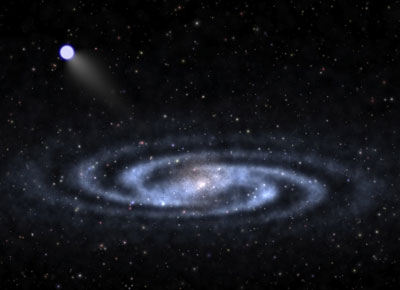 Astronomers discovered a 'hypervelocity star' that is the closest, second-brightest and among the largest of 20 found so far. Speeding at more than 1 million mph, the star may provide clues about the supermassive black hole at the center of our Milky Way and the halo of mysterious 'dark matter' surrounding the galaxy.
Astronomers discovered a 'hypervelocity star' that is the closest, second-brightest and among the largest of 20 found so far. Speeding at more than 1 million mph, the star may provide clues about the supermassive black hole at the center of our Milky Way and the halo of mysterious 'dark matter' surrounding the galaxy.
May 7th, 2014
Read more
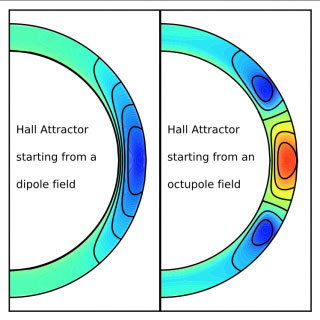 New findings could help advance understanding of matter at extreme densities.
New findings could help advance understanding of matter at extreme densities.
May 6th, 2014
Read more
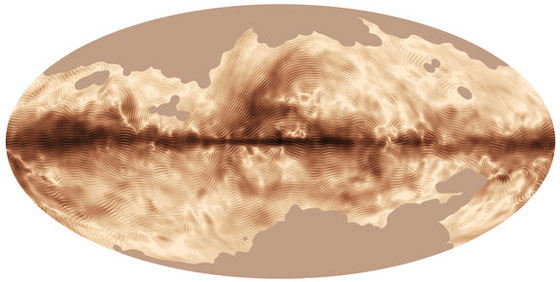 An international team of astrophysicists has released an unprecedented map of the entire sky that charts the magnetic field shaping our Milky Way Galaxy. The map reveals magnetic field lines running parallel to the plane of the Galaxy, as well as great loops and whorls associated with nearby clouds of gas and dust.
An international team of astrophysicists has released an unprecedented map of the entire sky that charts the magnetic field shaping our Milky Way Galaxy. The map reveals magnetic field lines running parallel to the plane of the Galaxy, as well as great loops and whorls associated with nearby clouds of gas and dust.
May 6th, 2014
Read more
The SETI project scientists are known for tracking possible extraterrestrial signals, but now they are also considering sending messages from Earth telling of our position. A researcher questions this idea in view of the results from a survey taken by students, revealing the general level of ignorance about the cosmos and the influence of religion when tackling these matters.
May 6th, 2014
Read more
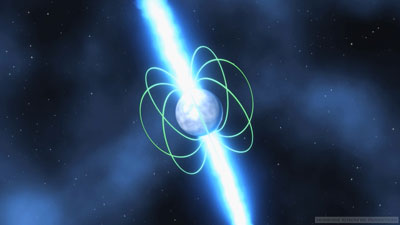 An international team of astronomers has made a measurement of a distant neutron star that is one million times more precise than the previous world's best.
An international team of astronomers has made a measurement of a distant neutron star that is one million times more precise than the previous world's best.
May 6th, 2014
Read more
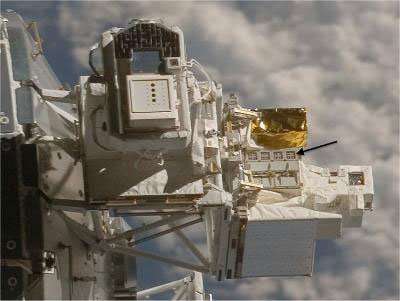 Three recent scientific papers examined the risks of interplanetary exchange of organisms using research from the International Space Station.
Three recent scientific papers examined the risks of interplanetary exchange of organisms using research from the International Space Station.
May 5th, 2014
Read more
Distant exploding stars observed by NASA's Hubble Space Telescope are providing astronomers with a powerful tool to determine the strength of naturally-occurring 'cosmic lenses' that are used to magnify objects in the remote universe.
May 1st, 2014
Read more
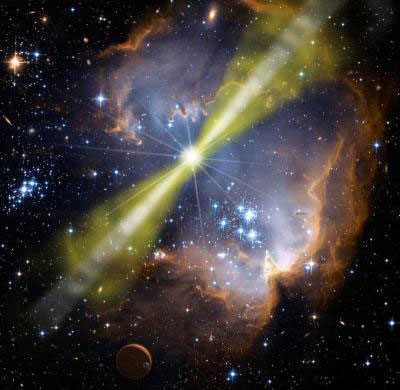 For the first time an international team of astronomers has measured circular polarisation in the bright flash of light from a dying star collapsing to a black hole, giving insight into an event that happened almost 11 billion years ago.
For the first time an international team of astronomers has measured circular polarisation in the bright flash of light from a dying star collapsing to a black hole, giving insight into an event that happened almost 11 billion years ago.
May 1st, 2014
Read more
 Over the past two decades, almost 1,500 exoplanets have been discovered orbiting distant stars - but Dutch astronomers have determined for the very first time just how fast one of those exoplanets is spinning on its axis.
Over the past two decades, almost 1,500 exoplanets have been discovered orbiting distant stars - but Dutch astronomers have determined for the very first time just how fast one of those exoplanets is spinning on its axis.
May 1st, 2014
Read more
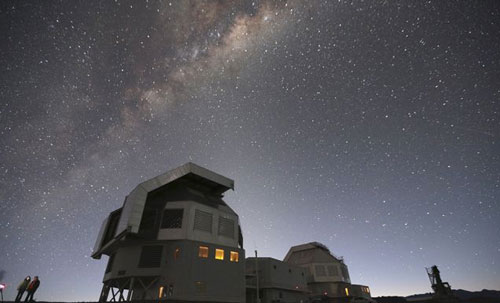 Faintest galaxy ever detected illuminates unusual aspects of the universe's early evolution.
Faintest galaxy ever detected illuminates unusual aspects of the universe's early evolution.
May 1st, 2014
Read more
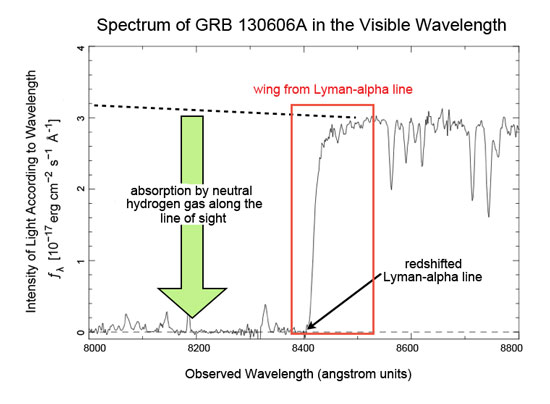 Researchers discovered an indicator of when re-ionization of the primordial Universe began. Direct measurement of the absorption features in the spectrum of the afterglow toward GRB 130606A, located at a great distance, revealed the proportion of neutral hydrogen gas absorbing the light in its vicinity. This finding provides the best estimate of the amount of such neutral gas in the early Universe.
Researchers discovered an indicator of when re-ionization of the primordial Universe began. Direct measurement of the absorption features in the spectrum of the afterglow toward GRB 130606A, located at a great distance, revealed the proportion of neutral hydrogen gas absorbing the light in its vicinity. This finding provides the best estimate of the amount of such neutral gas in the early Universe.
Apr 30th, 2014
Read more
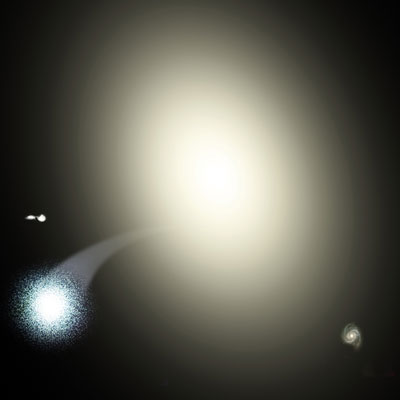 The galaxy known as M87 has a fastball that would be the envy of any baseball pitcher. It has thrown an entire star cluster toward us at more than two million miles per hour. The newly discovered cluster, which astronomers named HVGC-1, is now on a fast journey to nowhere. Its fate: to drift through the void between the galaxies for all time.
The galaxy known as M87 has a fastball that would be the envy of any baseball pitcher. It has thrown an entire star cluster toward us at more than two million miles per hour. The newly discovered cluster, which astronomers named HVGC-1, is now on a fast journey to nowhere. Its fate: to drift through the void between the galaxies for all time.
Apr 30th, 2014
Read more
If you have often imagined yourself piloting your X-Wing fighter on an attack run on the Death Star, you'll be reassured that University of Leicester students have demonstrated that your shields could take whatever the Imperial fleet can throw at you.
Apr 30th, 2014
Read more
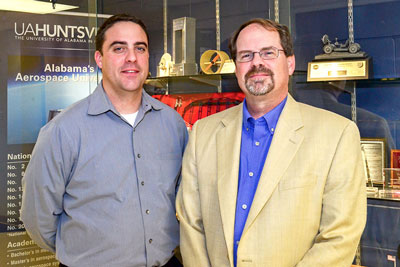 The biggest-sized junkyard in the world orbits it, and a University of Alabama in Huntsville aerospace systems engineering graduate student says it's time to get active about reducing the debris field before we reach a tipping point beyond which we may not be able to do much.
The biggest-sized junkyard in the world orbits it, and a University of Alabama in Huntsville aerospace systems engineering graduate student says it's time to get active about reducing the debris field before we reach a tipping point beyond which we may not be able to do much.
Apr 30th, 2014
Read more
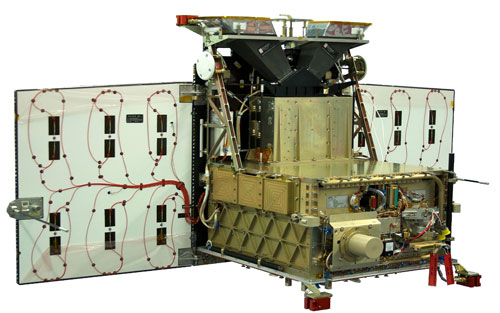 Microsatellites have to be very light - every gram counts. The same applies to the gyroscopes used to sense the satellite's orientation when in orbit. A novel prototype is seven times lighter and significantly smaller than earlier systems.
Microsatellites have to be very light - every gram counts. The same applies to the gyroscopes used to sense the satellite's orientation when in orbit. A novel prototype is seven times lighter and significantly smaller than earlier systems.
Apr 30th, 2014
Read more
A new study suggests the search for life on planets outside our solar system may be more difficult than previously thought. The study finds the method used to detect biosignatures on such planets, known as exoplanets, can produce a false positive result.
Apr 29th, 2014
Read more
Streaming jets of high-speed matter produce some of the stunning objects seen in space. Astronomers have seen them shooting out of young stars just being formed, X-ray binary stars and supermassive black holes at the centers of large galaxies. Theoretical explanations for what causes those beam-like jets have been around for years, but now an experiment by French and American researchers using extremely high-powered lasers offers experimental verification of one proposed mechanism for creating them.
Apr 29th, 2014
Read more
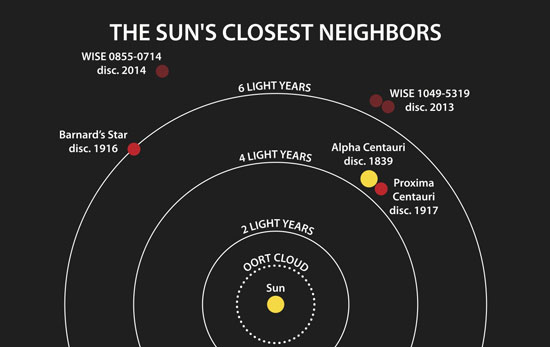 A 'brown dwarf' star that appears to be the coldest of its kind has been discovered by a Penn State University astronomer using NASA's Wide-field Infrared Survey Explorer and Spitzer Space Telescopes. Images from the space telescopes also pinpointed the object's distance at 7.2 light-years away, making it the fourth closest system to our Sun.
A 'brown dwarf' star that appears to be the coldest of its kind has been discovered by a Penn State University astronomer using NASA's Wide-field Infrared Survey Explorer and Spitzer Space Telescopes. Images from the space telescopes also pinpointed the object's distance at 7.2 light-years away, making it the fourth closest system to our Sun.
Apr 26th, 2014
Read more
 Astronomers discovered a 'hypervelocity star' that is the closest, second-brightest and among the largest of 20 found so far. Speeding at more than 1 million mph, the star may provide clues about the supermassive black hole at the center of our Milky Way and the halo of mysterious 'dark matter' surrounding the galaxy.
Astronomers discovered a 'hypervelocity star' that is the closest, second-brightest and among the largest of 20 found so far. Speeding at more than 1 million mph, the star may provide clues about the supermassive black hole at the center of our Milky Way and the halo of mysterious 'dark matter' surrounding the galaxy.
 Subscribe to our Space Exploration News feed
Subscribe to our Space Exploration News feed










